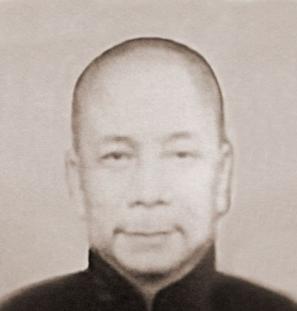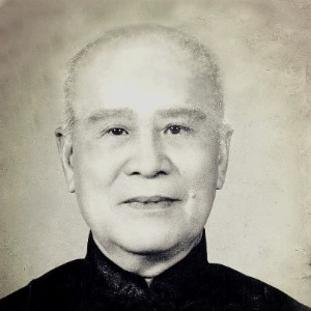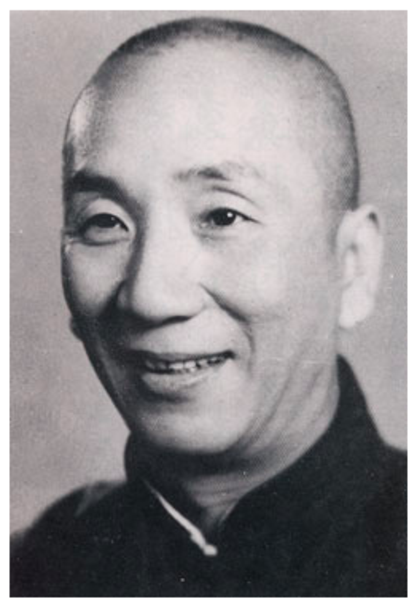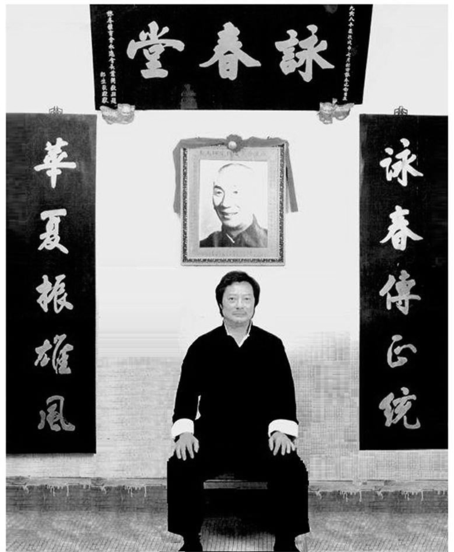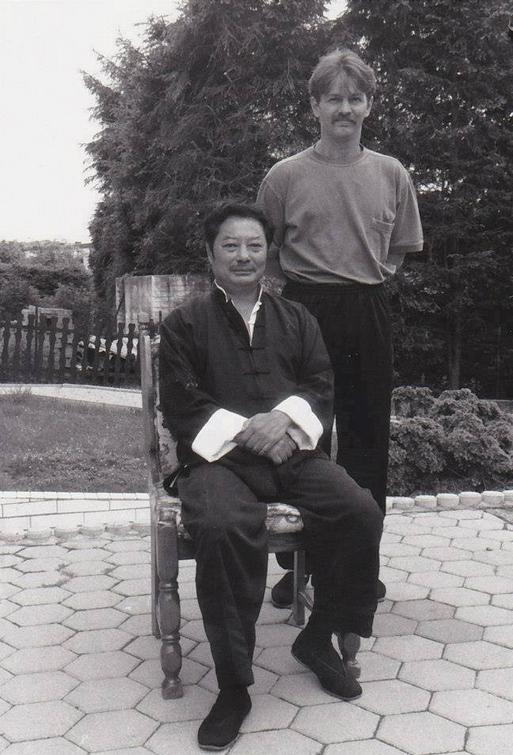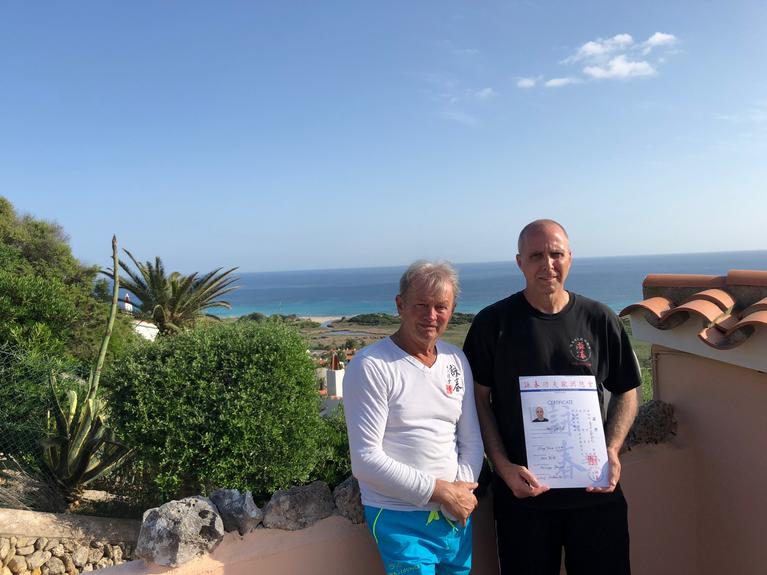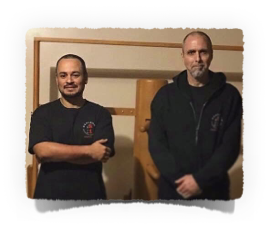While many different accounts mention many different, controversial events in regards to the origins of the system and how it was transferred, there is no debate around the legendary Leung Jan (梁贊). Leung Jan was a Chinese herbal doctor in Foshan, China. Historical accounts also recognize him by the title "Mr. Jan of Foshan" (佛山贊先生). He was the pride of the region and was known all across China. Wing Chun has a history of champion students like Wong Shun Leung, but the first to gain this type of recognition was Leung Jan. Mr. Jan of Foshan was also known for:
- The King of Wing Chun (詠春拳王) from being undefeated for over 300 challenge fights from all sorts of different styles.
- The systematization of the Wing Chun system, creation of the standard forms and learning methods to create consistency in the system.
The late Yip Man was the very master that has been accredited for the instruction of Bruce Lee. Yip Man was the first to bring Ving Tsun Kung Fu from its maiden land of Foshan, China to Hong Kong. There, Yip Man would go on to teach Ving Tsun for the remainder of his life. Having taught very high profile individuals such as, Wong Shun Leung and Bruce Lee, Wing Chun had gained global recognition. Numerous documentaries and feature films have been made in honor of the late Yip Man.
Wong Shun Leung was born June 21st 1935, the oldest son of a Cantonese doctor, who passed his knowledge on to him. Now known as doctor and herbalist,
Wong Shun Leung was crazy about fighting since his childhood. Because his father was well known in the Kung Fu scene, he often got the chance to watch
and admire the different fighting styles. From an early Wong, was interested in the roof tops of flats and remote parking garages, as these were the
places to witness gangs and individuals fight.
In witnessing such events, Wong learnt an important lesson early on: “Hit first, ask questions later”. Wong Shun Leung became associated with students
of different fighting styles who encouraged him to enter the Kung Fu study and at the age of 15-16, Wong Shun Leung tried a variety of different
fighting styles.
"Hit first, talk later!"
He started with Tai Chi Chuan but quickly moved on to western style boxing. Seeing good practical tips and manoeuvres, he started to train in western
boxing. When Wong Shun Leung accidentally hit his former boxing coach too hard, the coach became irritated and attacked him nevertheless, Wong, with a
bloody nose and mouth managed to drive his former trainer in a corner and knocked him out. Having lost respect for his trainer Wong stopped his boxing
lessons, and decided to take up a new martial art that was barely know in Hong Kong at the time ‘Ving-Tsun Kung Fu’ that was not only barely known, but
only boasted one recognised teacher at the time Yip Man.
On starting at Yip Man’s school at 17 years of age, Wong observed students training Chi Sau. Considering his boxing training, their movements seemed very
impractical and he inwardly laughed at the Ving-Tsun. Shortly after joining he was challenged to a fight by one of the students at the school and after
only a few seconds, Wong had his opponent on the floor. Yip Man, was somewhat surprised at this and asked him if he would like to fight one of the older
students. Wong accepted and had no trouble winning the second bout. Yip Man saw this as a challenge and now took on a fight with Wong himself. Wong
remembered what happened with his old boxing trainer and thought he would have an easy fight against the 59 year old Yip Man. With a lot of fancy footwork
and fast movements he thought he could quickly tire him but Yip Man was very tactical and manoeuvred Wong into a corner. When Wong was about to kick,
Yip Man caught him off balance. Wong fell against the wall and Yip Man covered the distance quickly and with a few strokes tackled Wong, showing him that
if it had been his intention, he could have seriously hurt him. The body-control and speed of Yip Man took Wong by surprise and made him realise that he
had met his master.
The next day Wong fought again, this time against Yip Bo Ching, one of Yip Man’s best students. Yip Bo Ching won easily. Again, this convinced Wong
completely and he officially became a student of Yip Man. The sixty year old Yip Man observed Wongs hard training regime and ambitious nature. He told his
oldest pupil Leung Sheung, that he was convinced that his Ving-Tsun would make Wong famous in Hong Kong in one years time. However, Yip Man was proved
wrong; it only took 3 months by which time Wong weighed only 53 kilograms. He accepted every challenge and came out a winner. Between the ages of 18 and
19 Wong fought more than 60 fights and was envied by many people who were paid to fight him. Due to his track record of success, Wong had made Ving-Tsun
the main subject of conversation in Hong Kong and demonstrating that ‘Finally there was a style that was successful’ '
"Lee was lazy and a slow learner."
William Cheung, also a well known Ving-Tsun fighter, introduced Lee Siu Lung (Bruce Lee) to Ving-Tsun. Wong Shun Leung noticed that Lee did not take his
Ving-Tsun study seriously; he was lazy and therefore learnt slowly. If he got into trouble with the law or an opponent, he assumed that William or his
father would get him out again. When William, who had been a role model fighter for Lee, went to Australia, Lee felt abandoned in an aggressive
environment. He turned to Wong Shun Leung to learn Ving-Tsun and because of this changed his approach to his training. Although Lee would have liked
private lessons from Wong. Wong did not see much use in this. Nevertheless; Lee was resourceful and determined and after school, quickly arrived at Wong’s
house before the other students. When the students arrived he sadly informed them that Wong was not at home. Everybody left and Lee returned to take
advantage of the private lesson he so desired. For a period of one and a half years Wong educated the clever and determined student Lee almost daily.
Wong recognised that Lee’s strength was in Chi Sau. His reflexes developed so well, that he was capable of reacting to every attack from his opponent.
His training would surely have continued until he learned everything in Ving-Tsun, if it were not for his parents sending Lee to the United States of
America, because of his complicated course of life. The friendship between Wong and Lee weakened and was limited to letters or an occasional visit, when
Lee was in Hong Kong for a film take or to visit his parents.
When Lee started to introduce Ving-Tsun in the USA, he turned to Wong Shun Leung to be clear about the different techniques. Wong, a seasoned fighter,
was Lee’s idol; before a situation even occurred, Wong had the response already in his mind. Shortly before his death, Lee visited Hong Kong and had a
long discussion with Wong about the theories and techniques of Jeet Kune Do, developed by Lee. The core of the discussion was that, except for Lee, nobody
else could learn this system. Lee should never have developed this system. Without the ground basics of Ving-Tsun, a pupil would not be able to learn it.
Lee himself learnt Ving-Tsun traditionally step by step and fought in the street to gain experience and to bring his knowledge into a new system. Chi Sau
is an important element of the Ving-Tsun system. The new teaching methods of Jeet Kune Do seemed to be impossible to master; a link was missing in the
chain. Wong tried to make Lee understand that he should have more patience.
‘Wong became one with his art.'
Wong Sheng Leung died of a stroke on January 28, 1997. A shock to everybody who knew him. Wong was always very frank. His teaching methods seemed
authoritarian and traditional, yet he was always prepared to advise his pupils and answer their questions. Contradictory to Yip Man, he also taught
non-Chinese people. Wong Shun Leung was an exemplary human being that came to be an art form. He started as a talented fighter and studied the physical
and psychological aspects of Ving-Tsun and truly became one with Ving-Tsun. He was a man who knew how to use his voice, soft or loud, in a certain
situation. He knew his limits, therefore also the limits of others. He worked quietly, relaxed and very focused. His practical way of life could be
compared to a sword; not dangerous until you touch the sharp edge.
Written by: Philipp Bayer
".......Like many, I was attracted to martial arts at a young age. The theories and combat training that accompanies these far east martial arts were more
than philosophical to me and to many of my generation. The main reasons were the ability to take away the natural habits and behaviors of our own culture.
But also new perspectives and opportunities for personal development. The only martial arts available were mainly the martial arts from Korea and Japan. With
great curiosity, I practiced the Shotokan Karate from 1970 to 1976. Then my attention went to Taekwondo until 1979.
"Advantage in many confrontations and challenges."
When the first representatives of Ving Tsun appeared at the German martial arts scene, that made a great impression to me. The same effect as the previously
mentioned introduction of Japanese and Korean martial arts earlier in that time. In many demonstrations and predominance in many confrontations and challenges,
this original Chinese school put its footsteps into the earth. In a short period of time, it therefore gained a worthy position between the previously established
Japanese and Korean schools. The effect of this soft but intelligent boxing style on the already existing setting of martial arts was as spectacular. For many of
my generation this was a new beginning. My first acquaintance with Ving Tsun was based solely on some initial information available about this Chinese family system.
It seemed like what I always associated with Chinese boxing. Without a doubt, I joined in 1979 (until 1981) At that time, there were only representatives of this
famous family style in Germany. For me, this was the oppurtunity to learn more about this method and to eventually learn it as well.
"A serious accident with the result the loss of my entire left hand. "
A serious accident resulting in the loss of my entire left hand led to dramatic conditions in my life, but also in the initial phase of my Ving Tsun career. Having
long discussions with my teachers and trainers, I was brought to attention that in, view of my disability and associated problems, this would result in insoluble
difficulties in my Ving Tsun. This would exclude any possible further training. During this period, I felt that there was also no willingness to learn how to deal
with my particular disability. Despite my great willingness, Ving Tsun to learn and master it successfully. The huge amount of money I had already invested was, would
turn out to be worthless. lf I decided not to give up the Ving Tsun so easily. Saddled with this impossible assignment, I could easily settle my feelings. I should go
my own way.
"I've put many illusions away from me."
My inner and outer Ving Tsun journey did not start until the fall of 1980 with the loss of my hand. Trusting on my willpower and research, I finally came to the school
of my sifu and true Ving Tsun teacher. Since I entered his school in 1983 Wong Shun Leung had accepted me as his student. In the traditional manner and with all the
consequences. He paid a lot of attention to my Ving Tsun study and became a problem-oriented teacher. In the time I trained at Wong Shun Leung, I put a lot of illusions
away from me. I also learned important specific insights into the history and techniques of Ving Tsun. I can tell so much about this period, but there's just no time
fort hat now.
"Ving Tsun has enriched me in many areas."
Nevertheless, I want to conclude that through the close cooperation with Wong Shun Leung, the logic, directness and effectiveness of Ving Tsun has become clear to me.
It gave me perseverance, opportunities to explore new areas and new insights. But it also revealed the possibilities I had despite my disability. Even though it was
accidental it also caused that I will never be able to reach specific techniques in my arsenal. As a result, Ving Tsun has interwoven a mental approach in me. The
applications and productivity have enriched me in many areas. To a large extent thanks to my sifu. Wong Shun Leung's willingness not to overcome my specific handicap,
but to deal with it, opened many doors to me. Researching, positive and fearless. Like Ving Tsun itself ... In conclusion, I would like to say that my interest in
Ving Tsun and my friendship with Wong Shun Leung created many opportunities for me and support me back there to help others. A notion...."
Written by: Philipp Bayer
Kevin Gledhill was introduced to Philipp Bayer by his sihing Desmond Spencer in 2004. Philipp Bayer was invited to give a 5 day seminar in NYC. It was at
this meeting that a unique and incredibly efficient approach was presented to Kevin Gledhill which had a tremendous impact on his understanding of VT. Philipp
Bayers high level of awesome skills and clear unambiguous execution of VT fighting illuminated the path that he needed to take in order to further develop
himself and guide his student's development.
Kevin Gledhill has subscribed to Philipp Bayer's mentorship ever since, traveling to Germany and other European locations to train personally with Philipp Bayer
and attend seminars. Kevin Gledhill received instructor certification and created the VTKFAA at Philipp Bayer's suggestion in 2018. Kevin Gledhill is the Chief
instructor at VTKFAA.
Written by: Kevin Gledhill
Rene Ferrer started martial arts training in 1992. He is second Dan in Aikido, and previously studied Karate, Pekiti Tirsia Kali and Jujitsu. He is also trained
in Qi Gong, Yoga and Acupuncture.
Rene was introduced started Ving Tsun in 2011 in Argentina under Sifu Marcelo Ramos. When he moved to Dubai, he started to train with Sifu Richard Reyes.
When he had the opportunity, he started to travel to Malaysia from Dubai to study under Sifu David Peterson, who is one of the most recognized students
of Wong Shun Leung.
In 2016, Rene moved to Houston and continued his Ving Tsun education under mentoring of Sifu Kevin Gledhill by traveling to New York for the training sessions.
After proving his skills, he has earned the honor to represent VTKFAA and open their Houston location from Sifu Kevin Gledhill.
Written by: Rene Ferrer
